Situated close to the mouth of the Sumida River is one of Tokyo’s special historic sites, and one recognized as a place of scenic beauty is the Hamarikyu Gardens.
The traditional Japanese landscape garden was originally part of a villa owned by the family of the 17th Century Tokugawa Shogun. The current garden was also the site of the nation’s first official guesthouse, the Enryokan, Japan’s first western-styled building constructed of stone.
Built-in May of 1869, it was used until 1883 and destroyed in 1889. The guesthouse was used by American President Ulysses S. Grant and his wife during their two-month-long stay in 1879,and two years later by King Kalakaua of Hawaii amongst many other visiting dignitaries.
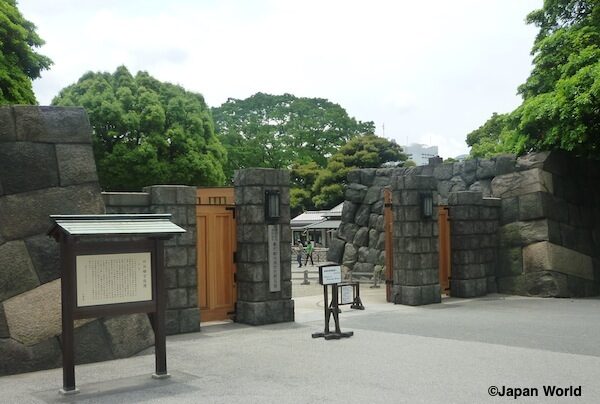
The entranceway is an interesting mixture of east and west, with stone ishigaki, traditional castle stone walls with yagura watch towers bases, with western-styled stone gateways in between. Surrounded by defenses, the villa and gardens also acted as support for Edo Castle. In the old days, part of the villa grounds was set aside for falconry, a sport reserved for the privileged classes.
Even today on special occasions, displays of falconry are staged within the grounds of this expansive garden.
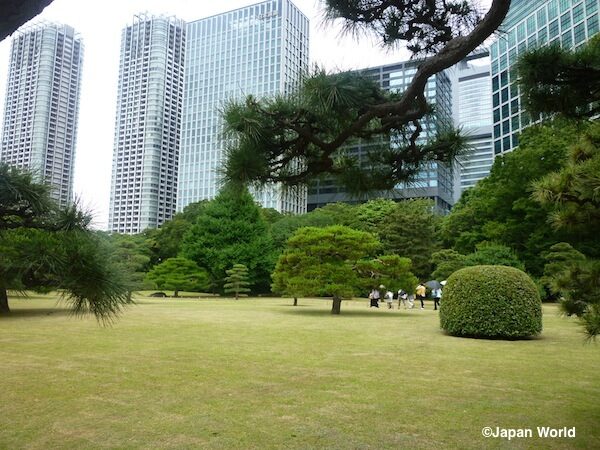
(Site of the original guesthouse, the Enryokan
The park itself is about 250,000 m2 of exquisite traditional landscaping surrounded by castle-like stone walls and a protective seawater moat fed by the tidal waters of Tokyo Bay.
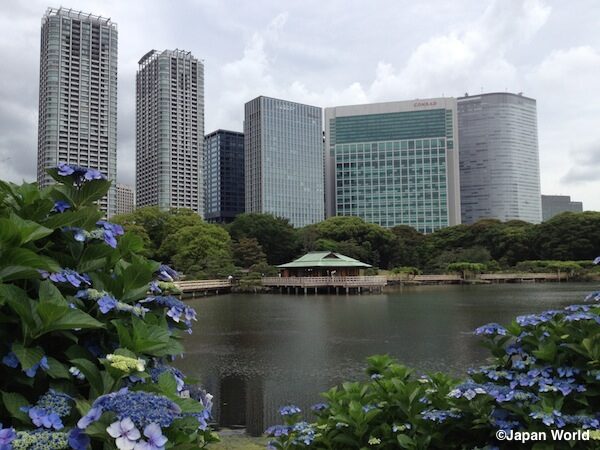
The centerpiece of the Hamarikyu Garden is the Shioiri Pond, a large calming tidal waterway with the Nakajima Ochaya Tea Room located on a small island in the middle and linked by low, wooden bridges.
For an extra cost the tea room offers visitors a simple tea ceremony with a bowl of hot, thick green Matcha tea and a traditional Japanese wagashi sweet.
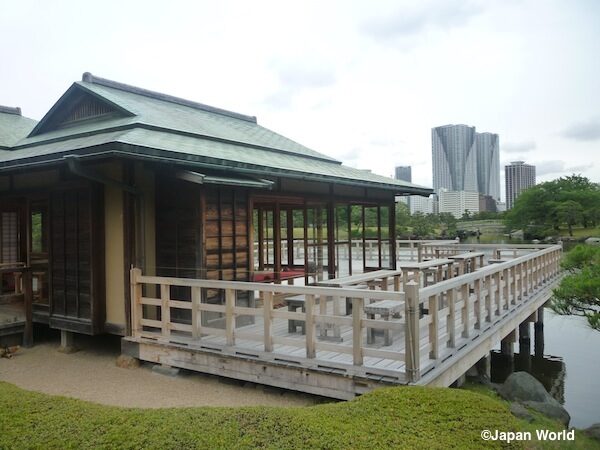
(Nakajima Ochaya Tea Room / 中島の御茶屋)
A 300 year old spreading pine tree, the biggest in Tokyo and dating back to the times of the sixth Shogun, Tokugawa Ienobu, can still be seen amongst a grove of plum trees, a peony garden, and other seasonal flower gardens.
A walk around the gardens will reveal the duck hunting walls, the docks for the Shogun’s private ship, further lakes and ponds and interspersed with traditional raked sand gardens, stone lanterns and all manner of traditional garden architecture.
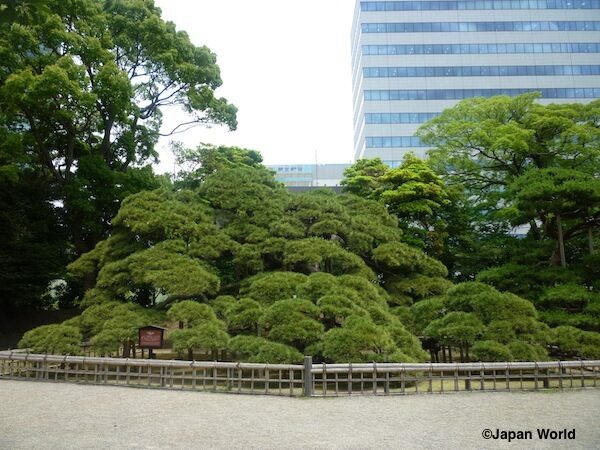
(300 year old spreading pine tree / 300年の松)
While the gardens provide an air of peace and tranquility, the surrounding skyscrapers towering over the ancient grounds create an interesting juxtaposition of old and new, traditional and modern, calm and excitable. The scenes within the garden also change with the seasons, making it a year-round attraction that can be enjoyed time and again.
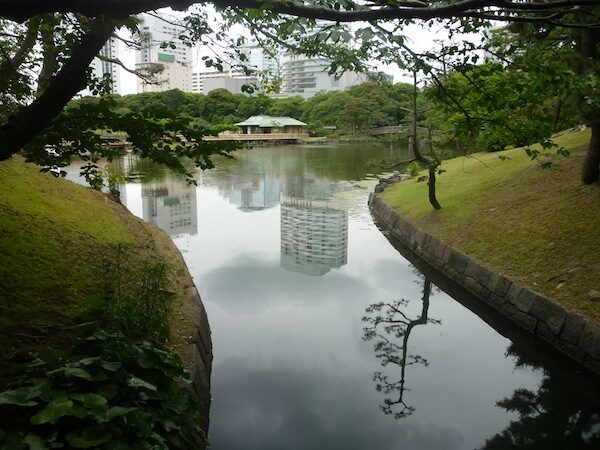
Access is via the main Entrance, serviced by Tsukijishoji Station on the Toei Oedo Line, or Shiodome via the Yurikamome line.The closest subway to the Middle Entrance is the Shiodome Station on the Oedo Line. The 35-minute Tokyo Mizube and Tokyo Cruise Ships Water Bus services from Asakusa arrive at and depart from the park, and water bus tickets include park admission.
Information
Web Site; http://teien.tokyo-park.or.jp/en/hama-rikyu/index.html (English)